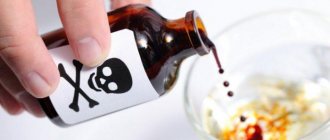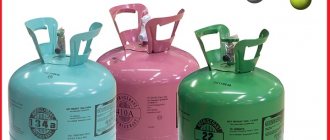16:37, 04.08.2020 755
0
In connection with recent events, it is important to remember how the “silent killer” works and what to do to avoid becoming its victim.
Carbon monoxide poisoning is a problem that occurs not only in the cold season. In the summer, many people go to villages or to the dacha, where most often there is a bathhouse and heating, in case of cool nights. Everywhere we are lurked by an insidious and invisible enemy - carbon monoxide.
Carbon monoxide - what is it and what is the danger?
Carbon monoxide is a gaseous substance that does not have a specific color or odor. It is formed when incomplete decomposition of carbon occurs as a result of combustion.
Carbon monoxide can concentrate in poorly designed stoves and fireplaces and in poorly ventilated cars. There are frequent cases of carbon monoxide poisoning in the bathhouse. Complete elimination of the gas entering the body occurs after 4.5-5 hours.
The danger is that due to the lack of color and odor, the presence of gas in the surrounding air cannot be determined without special instruments. People don't even notice that intoxication is happening.
Prevention
In order to reduce the risk of carbon monoxide poisoning, it is necessary to take preventive measures in advance.
https://www.youtube.com/watch?v=MD7KjUS31Zg
In order to prevent intoxication, it is recommended to follow these rules:
- If it is necessary to carry out work involving contact with CO, it is necessary to use protective respirators with special filters or oxygen cylinders. At the same time, it is necessary to ensure high-quality ventilation in the room.
- When operating stoves or fireplaces, it is important to monitor the condition of fuel materials and control the position of the dampers.
- Before working with CO, prophylactic use of the drug Acyzol is recommended to protect against the formation of carboxyhemoglobin compounds in the blood.
Effect on the body
How does carbon monoxide affect the human body? There are three pathogenetic mechanisms that are triggered in the body, exhibiting the toxic effects of carbon monoxide.
- CO, when inhaled, actively enters the bloodstream, where it binds with hemoglobin. In this case, the oxygen needed by the body either does not have time to be fixed in red blood cells, or is completely displaced. Instead of oxygen, carbon dioxide enters organs and tissues, which leads to the development of hypoxia.
- Carbon monoxide is able to bind with myoglobin, which is why signs of carbon monoxide poisoning develop, such as muscle weakness and a decrease in cardiac activity.
- The effect of carbon monoxide is such that it triggers a cascade of pathological biochemical reactions instead of normal ones, which causes disruption of the functions of all organs and tissues.
Carbon monoxide poisoning develops in a short time, and the nervous system is primarily affected, since it is characterized by increased sensitivity to a lack of oxygen (its lack explains the pathogenesis of headaches and fainting). So, for severe intoxication with fainting, 1-3 minutes with a CO concentration of 14 mg/l will be sufficient. Naturally, the lower the concentration, the slower the symptoms of carbon monoxide poisoning develop. At a concentration of 3.4-5.7 mg/l, it takes 20-30 minutes for the development of severe intoxication. In children, women during pregnancy, and people with lung diseases, symptoms of poisoning develop faster.
Signs and symptoms [ edit | edit code ]
When the inhaled air contains 0.08% CO, a person feels a headache and suffocation.
When the CO concentration increases to 0.32%, paralysis and loss of consciousness occurs (death occurs within 30 minutes). At concentrations above 1.2%, consciousness is lost after two to three breaths, and the person dies in less than 3 minutes. Concentration of CO in the air, carboxyhemoglobin HbCO in the blood and symptoms of poisoning.
[7] [8]
| CO,% vol. (20°C) | CO, mg/m³ | Exposure time, h | HBCO in blood, % | Main signs and symptoms of acute poisoning |
| ≤0.009 | ≤100 | 3.5—5 | 2.5—10 | A decrease in the speed of psychomotor reactions, sometimes a compensatory increase in blood flow to vital organs. In persons with severe cardiovascular insufficiency - chest pain during exercise, shortness of breath |
| 0.019 | 220 | 6 | 10—20 | Slight headache, decreased mental and physical performance, shortness of breath with moderate physical activity. Visual perception disorders. May be fatal to fetuses and persons with severe heart failure |
| ≤0.052 | ≤600 | 1 | ||
| ≤0.052 | ≤600 | 2 | 20—30 | Throbbing headache, dizziness, irritability, emotional instability, memory loss, nausea, poor coordination of fine hand movements |
| 0.069 | 800 | 1 | ||
| ≤0.052 | ≤600 | 4 | 30—40 | Severe headache, weakness, runny nose, nausea, vomiting, blurred vision, confusion |
| 0.069 | 800 | 2 | ||
| 0.069—0.094 | 800—1100 | 2 | 40—50 | Hallucinations, severe ataxia, tachypnea |
| 0.1 | 1250 | 2 | 50-60 | Fainting or coma, convulsions, tachycardia, weak pulse, Cheyne-Stokes respirations |
| 0.17 | 2000 | 30 min | ||
| 0.15 | 1800 | 1.5 | 60—70 | Coma, convulsions, respiratory and cardiac depression. Possible death |
| 0.2—0.29 | 2300—3400 | 30 min | ||
| 0.49—0.99 | 5700—11500 | 2-5 min | 70—80 | Deep coma with decreased or absent reflexes, thready pulse, arrhythmia, death. |
| 1.2 | 14000 | 1-3 min | Loss of consciousness (after two or three breaths), vomiting, convulsions, death. |
- In case of mild poisoning the following appear:
- headache,
- knocking in the temples,
- dizziness,
- chest pain,
- dry cough,
- lacrimation,
- nausea,
- vomit,
- visual and auditory hallucinations are possible,
- redness of the skin, carmine-red coloring of the mucous membranes,
- tachycardia,
- increased blood pressure.
- in case of moderate poisoning:
- severe tinnitus
- drowsiness,
- possible motor paralysis with preserved consciousness
- in case of severe poisoning:
- loss of consciousness, coma
- convulsions,
- involuntary passage of urine and feces,
- breathing disorder that becomes continuous, sometimes Cheyne-Stokes type,
- dilated pupils with weakened reaction to light,
- sharp cyanosis (blue discoloration) of the mucous membranes and facial skin. Death usually occurs at the scene as a result of respiratory arrest and a drop in cardiac activity.
- Cerebrovascular accident,
- Subarachnoid hemorrhages,
- Polyneuritis,
- Phenomena of cerebral edema,
- visual impairment,
- Hearing impairment
- Possible development of myocardial infarction,
- Skin trophic disorders (blisters, local edema with swelling and subsequent necrosis), myoglobinuric nephrosis,
- With a long coma, severe pneumonia is constantly observed.
Severe complications are often observed:
How does poisoning occur?
What are the main causes of carbon monoxide poisoning, under what conditions is intoxication with this poison most often diagnosed? It would seem that there is no place for a modern person to encounter a toxic substance of this type, but this is not so. CO exposure is most often observed in the following cases:
- when living in a metropolis, where cars produce this substance in large quantities and emit it into the air,
- when you are in a closed room where a car engine is running,
- if the gas water heater is used incorrectly,
- in bathhouses where the ventilation system is poorly designed,
- in new buildings with improper operation of heating devices or in old buildings where there is a stove, but the chimney is never cleaned,
- in production, where carbon monoxide can be used to produce various organic substances.
The most frequently reported cases of carbon monoxide poisoning are caused by fires.
Risk groups [edit | edit code ]
- in case of fires;
- in production, where carbon monoxide is used for the synthesis of a number of organic substances (acetone, methyl alcohol, phenol, etc.);
- in gasified rooms in which gas-using equipment is operated (stoves, instantaneous water heaters, heat generators with an open combustion chamber) under conditions of insufficient air exchange, for example, when draft in chimneys and/or ventilation ducts is disrupted or there is a lack of supply air for gas combustion;
- in garages with poor ventilation [3][4][5], in other unventilated or poorly ventilated rooms, tunnels, since the car exhaust contains up to 1-3% CO according to standards and over 10% if the carburetor engine is poorly adjusted;
- when spending a long time on or near a busy road. On major highways, the average CO concentration exceeds the toxicity threshold; [6]
- at home in the event of a natural gas leak and untimely closed stove dampers in rooms with stove heating (houses, bathhouses);
- when using low-quality air in breathing apparatus;
- when smoking a hookah (a very large percentage of people experience headaches, dizziness, nausea, drowsiness after smoking a hookah, which is caused by carbon monoxide poisoning formed when there is a lack of oxygen supply to the hookah apparatus).
Symptoms
If symptoms consistent with carbon monoxide poisoning are observed, the patient requires immediate treatment. Intoxication is usually divided into three degrees of severity. With a mild degree, first of all, attention is drawn to the signs of damage to the central nervous system (CNS):
- attacks of headaches and dizziness,
- ringing in the ears, spots in front of the eyes, pounding in the temples,
- a feeling of tightness and pain in the chest, paroxysmal cough,
- lacrimation, attacks of vomiting and nausea,
- change in color of mucous membranes to bright red, redness of the skin of the face and extremities,
- the appearance of tachycardia,
- paroxysmal pressure surges,
- decreased accuracy of coordination of movements, unsteadiness of gait.
As the degree of poisoning increases to medium, the symptoms of central nervous system damage worsen, weakness and drowsiness appear, the muscles become paralyzed, although the person still retains clear consciousness.
Have you had any symptoms of CO poisoning?
- Were
- No, it was not
- There was something similar
ResultsPoll Options are limited because JavaScript is disabled in your browser.
- No there were 77%, 170 votes 170 votes 77% 170 votes - 77% of all votes
- There were 17%, 37 votes 37 votes 17% 37 votes - 17% of all votes
- There was something similar 6%, 13 votes 13 votes 6% 13 votes - 6% of all votes
Total votes: 220 06/30/2017 You or from your IP have already voted.
- Were
- No, it was not
- There was something similar
You or from your IP have already voted. results
People who are severely poisoned develop the following symptoms:
- short-term episodes of loss of consciousness, turning into a state of catatonia,
- convulsions,
- disorders of the respiratory system appear in the form of periodic short-term stops in breathing,
- all sphincters relax, which leads to urination and defecation,
- pupils dilate and do not respond to light,
- the skin becomes cyanotic.
Increased stress on the heart is especially dangerous during pregnancy, as women are forced to cope with double load in order to provide oxygen not only to their brain, but also to the fetus. When mild poisoning progresses to moderate, and then to severe, fetal death is possible because the body will direct efforts to preserve the life of the mother.
According to severity, fulminant poisoning is distinguished separately. Toxicology claims that in this case, more than 75% of hemoglobin immediately binds to CO and subsequent death occurs within 2-3 minutes, accompanied by loss of consciousness and convulsions.
Although infrequent, two rare forms of poisoning can develop: fainting and euphoric.
The fainting form is characterized by pale skin and rapid loss of consciousness. The mechanism for the development of this reaction in some people has not been established, but it is assumed that CO affects the center responsible for vascular tone. Such a lesion leads to a drop in blood pressure and fainting.
The euphoric form is initially characterized by mental arousal and may be accompanied by delusions and hallucinations. As intoxication worsens, fainting occurs. It is believed that such poisoning develops as a result of exposure to the centers responsible for higher nervous activity.
How not to get poisoned? Safety regulations
Carbon monoxide (CO) is a product of combustion of carbon contained in various organic substances, including wood, coal, natural and industrial gas, oil, petroleum products (gasoline, kerosene, etc.), explosives and others.
The cause of CO inhalation in most cases is:
- Faulty exhaust system for combustion products from the furnace/boiler;
- A closed, fairly sealed living space, where a gas water heater, stove, boiler, and gas stove are installed;
- Being in a poorly ventilated area with a running car.
- Accumulation of combustion products in underground voids, and their further penetration into basements and garages.
The Ministry of Emergency Situations has developed safety rules to prevent carbon monoxide poisoning, which include:
- If a person is in a burning room, bend his head as low as possible to the floor and urgently get out of the fire, because CO is lighter than oxygen, so it stays in the upper part of the room;
- Do not start the car in a confined space or garage - only in an open space;
- Periodic check of the serviceability of the exhaust system and room ventilation;
- Installation of a gas control system in a residential area;
- Clean chimneys in a timely manner;
- Carry out a preventive inspection of gas equipment and check it for leaks;
- When building a heating system in a house, invite trusted specialists who have certificates for this type of activity;
- Do not buy used heating and gas equipment, or if this equipment is of dubious origin/manufacturer;
- When working with gas equipment (installation, configuration), use personal protective equipment.
Important! Covering the respiratory organs with a damp cloth during a fire can partially retain only some combustion products, however, CO molecules are so small that it is almost impossible to protect yourself from them with such a device.
The most common causes of carbon monoxide poisoning:
- long-term (over 5 hours) stay in close proximity to busy highways;
- being in an unventilated room in which there is a combustion source that is deprived of the removal of combustion products. This could be a fire, a running car, a stove with a closed chimney, etc.;
- neglect of safety rules and instructions for the devices used when using household and home-made devices that involve combustion (burners, potbelly stoves and other heating devices).
Carbon monoxide is also formed during gas welding, which uses carbon dioxide. The latter, which is carbon dioxide (CO2), loses an oxygen atom when heated and turns into CO. But when natural gas burns in working stoves and appliances, no CO is formed. If they are faulty, carbon monoxide is released in concentrations that are hazardous to health.
Symptoms
To properly provide assistance for carbon dioxide poisoning, you need to know the characteristic symptoms.
Clear signs of mild carbon monoxide poisoning:
- migraine;
- tapping in the temporal area of the head;
- choking cough;
- severe dizziness;
- bouts of vomiting;
- nausea;
- tearfulness;
- severe pain in the chest area;
- hallucinations, both visual and auditory;
- purple color of the scalp;
- hypertension;
- tachycardia.
The following symptoms indicate a moderate degree of intoxication:
- weakness;
- drowsiness;
- noise in ears;
- muscle paralysis.
The following signs indicate acute poisoning:
- fainting;
- uncontrolled urination and defecation;
- breathing problems;
- convulsions;
- cyanosis of the skin and mucous membranes;
- dilated pupils with poor reaction to light sources;
- coma.
Failure to provide assistance in a timely manner may result in death.
Carbon monoxide intoxication, alas, leaves behind a significant trace. In case of mild to moderate CO poisoning, a person may be bothered by:
- acute continuous headache;
- frequent dizziness;
- nervous disorders;
- memory loss;
- stop in development.
In acute poisoning, the following are often observed:
- circulatory disorders in the brain;
- polyneuritis;
- heart attack;
- cerebral edema;
- deterioration of hearing and vision (complete loss is possible);
- subarachnoid hemorrhage;
- severe pneumonia (with long-term coma).
At-risk groups
People who are particularly sensitive to carbon monoxide are:
- excessive consumption of alcoholic beverages;
- passionate about tobacco products;
- asthma sufferers;
- exhausted by nervous or physical stress.
In addition, pregnant women and children are at risk. Be carefull.
Causes
Poisoning often occurs due to:
- faulty heating appliances used in bathhouses, houses, garages and apartments;
- violations of safety precautions for using a particular heating device;
- long stays in rooms that are not ventilated;
- presence of combustion products in the smoldering area;
- lack of good exhaust.
Bathing procedures in the steam room are famous for their usefulness for all ages and are used even for colds. But there is also a dangerous side to folk tradition.
Often, due to haste and the desire to preserve heat, bathhouse attendants are in a hurry to close the chimney by closing the damper. Unextinguished coals continue to burn out barely noticeably, and carbon dioxide, being a product of this process, enters the room without signaling the danger either by color or smell. This situation develops due to the location of the furnace part of the stove in the steam room.
In the absence of ventilation or its insufficient power, the situation is aggravated and smoke increases.
You can get burned not only from the stove; according to the same principle, poisoning occurs in the smoke of a fire, from improper use of household gas, and some drivers have the misfortune of getting burned in the garage.
Carbon monoxide is extremely toxic if it enters the human body. It is much heavier than air and has neither color nor odor. That is why a person does not even feel at what point a poisonous gas begins to enter the body, which, combining with hemoglobin in the blood, prevents the flow of oxygen. What is the cause of carbon monoxide accumulation?
What can be the main reasons for the release of carbon monoxide?
| Factors | Actions |
| Closed exhaust damper. | Many people make the big mistake of trying to keep the stove hot and the steam room warm by closing the damper early. As a result, carbon monoxide cannot escape through the chimney and begins to enter the room. Thus, the poisoning of the people who are in it occurs. |
| Premature closing of the oven. | If the stove has not yet been sufficiently heated and has not warmed up the room, it should not be closed. |
| Untimely or poor-quality chimney cleaning. | Clean the pipe regularly to prevent gas from entering the steam room. |
| Improperly equipped ventilation system. | It is necessary to pay increased attention to it during the construction stage. |
It is absolutely forbidden to ignore safety rules. Most often, a person in a bathhouse receives mild degrees of carbon monoxide poisoning. But still the consequences can be very dire, even fatal.
Poisoning during a fire
What to do in case of carbon monoxide poisoning that occurs during a fire? First of all, it is necessary to call the Ministry of Emergency Situations team, and not run to help the people remaining in the burning room without special equipment. Such behavior will lead to the fact that first aid for carbon monoxide poisoning will have to be provided not only to the victims, but also to the unlucky rescuer, which will significantly complicate the work of specialists.
It is important to remember that wet rags and standard cotton-gauze dressings do not protect against the toxin. Only a gas mask can save you from it, without which it is strictly prohibited to enter a burning building.
Folk remedies
It is important to understand what can and cannot be done in case of gas poisoning. Carrying out full recovery at home is impossible. The risk of developing severe consequences can only be reduced in a hospital. If you don’t have a first aid kit, you can bring them to their senses using a cotton swab dipped in acetic acid.
However, you can reduce the risk of complications from exposure to gas; some folk remedies will provide assistance with this:
- Cranberry-lingonberry drink. The berries have antitoxic properties; together, they cleanse the body, accelerating the restoration of the normal functioning of all systems. Drink half a glass three times a day.
- Knotweed tincture strengthens and cleanses the body. It is recommended to take half a glass twice a day. You can buy the dry mixture at the pharmacy.
Tincture of knotweed strengthens and cleanses the body of the gas. - A decoction of guava leaves will effectively remove toxins and stabilize the biochemical balance. Take 200 ml per day, preferably divided into three times.
- Alcohol tincture based on radiola extract. You need to take 12 drops three times a day. Tones the heart muscle, strengthens the immune system and blood vessels.
- Dandelion root decoction. It has a pronounced antitoxic and tonic effect. It is necessary to boil 1 teaspoon of dry crushed root in boiling water for 20 minutes. Let it brew, strain and take a tablespoon at a time.
Dandelion root decoction.
First aid
What should you do in case of carbon monoxide poisoning first, if intoxication did not occur during a fire and it is possible to provide assistance to the victim? In addition to calling doctors, in case of carbon monoxide poisoning, emergency care includes:
- eliminating the effects of the toxin on the body (the victim is taken out into fresh air, the intake of CO is completely blocked, if it is possible to do this without harming one’s own health),
- first aid consists of ensuring a stable flow of fresh oxygen, for which the patient is removed from tight clothing, the windows in the room are opened,
- if a person is unconscious, emergency care for carbon monoxide poisoning also consists of turning him on his side and preventing his tongue from retracting and choking on vomit,
- the poisoned person must be brought to consciousness by allowing him to breathe ammonia,
- Cold compresses can be placed on the victim’s chest to increase blood circulation,
- if the patient is conscious, first aid for carbon monoxide poisoning is provided by giving him tea or coffee to drink (the choice of what to drink is explained by the following: the caffeine in these drinks stimulates blood circulation processes, facilitates the normalization of the patient’s general condition),
- if there is no breathing or pulse, it is necessary to carry out basic measures to resuscitate the patient.
If first aid for carbon monoxide poisoning is provided correctly, subsequent complications may not be expressed too clearly or may be completely eliminated. Considering that in modern life it has still not been possible to get rid of CO in various areas, every person needs to know the basics of first aid. This will help you provide assistance to your loved ones or colleagues if the need arises and, possibly, save someone’s life.
Therapy
Upon arrival of doctors at the scene of the incident, first medical aid begins with resuscitation measures if the patient is unconscious. If the patient is conscious, then he is transported to a hospital, where full treatment of carbon monoxide poisoning is carried out, taking into account all the symptoms, the degree of intoxication and the characteristics of the human body. This poisoning cannot be treated at home, especially if a pregnant woman or a person with chronic heart or lung disease is poisoned. In these cases, hospitalization is especially important.
Treatment after carbon monoxide poisoning in a hospital setting consists of:
- supplying oxygen to the patient (12-15 liters per minute is required for 6-7 hours to compensate for the effect of CO) through a mask or using a ventilator,
- Acyzol is introduced, a toxicological agent developed as an antidote for CO and allowing to free hemoglobin molecules from the effect of poison on them,
- Blood biochemistry is performed and, under its control, metabolic acidosis is corrected.
What to do if you have severe carbon monoxide poisoning? In a hospital setting, the patient is placed in a pressure chamber where oxygen is supplied under a pressure of 2 atmospheres. This treatment helps stabilize the patient’s condition and then eliminate the possible consequences of carbon monoxide poisoning.
Treatment
In the first three hours, it is very important to provide a high-oxygen supplement.[7] It is necessary to immediately eliminate the source of polluted air and provide breathing with pure oxygen under an increased partial pressure of 1.5-2 atm[8] or, preferably, carbogen[9]. Treatment is carried out in a hospital.
World medicine does not know reliable antidotes for use in cases of carbon monoxide poisoning[10].
Russian scientists have developed an innovative drug "Acyzol", positioned as an antidote [ source not specified 27 days
]. It is administered intramuscularly in the form of a solution. Also suggested as a prophylactic.
Possible consequences
Carbon monoxide poisoning can lead to the development of two groups of consequences. Early complications include:
- formation of encephalopathy,
- pulmonary edema of toxic type,
- disturbances in the normal functioning of the heart,
- pathologies of vision and hearing,
- neuritis.
The formation of persistent intractable encephalopathy is considered one of the most serious complications, leaving a person disabled for life. Proper first aid helps reduce the likelihood of developing this pathology.
Late complications that develop from 2 to 40 days after intoxication include:
- persistent decline in cognitive function,
- psychosis and amnesia,
- disorders in the motor sphere (paresis, paralysis, etc.),
- pneumonia,
- myocardial infarction,
- acute heart failure.
To prevent late complications, proper first aid for carbon monoxide poisoning is not enough. It is necessary to carry out full medical measures to protect the patient from possible late complications. This is especially important if pregnant women and children are poisoned.
Possible complications
Poisoning does not go away without leaving a trace, and even with mild intoxication, certain consequences are observed.
Complications that may occur with mild to moderate intoxication
:
- Chronic headaches
and weather sensitivity, that is, a person experiences a deterioration in health due to weather changes; - Frequent dizziness;
- Decreased cognitive abilities
. That is, memory, attention, and perception of new information deteriorate; - Deterioration in vision;
- Emotional instability
(frequent outbursts of anger, anger, which are replaced by apathy).
Complications that arise from severe intoxication
:
- Hemorrhages in the brain;
- Swelling of brain tissue;
- Acute myocardial infarction due to hypoxia;
- Inflammation of the respiratory tract (severe bronchitis, pneumonia);
- Coma is the most severe consequence of poisoning, which can result in the death of the patient.











